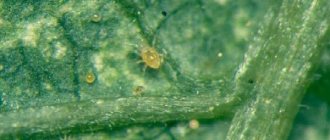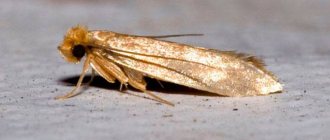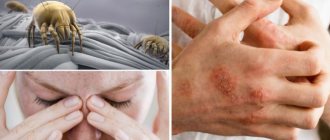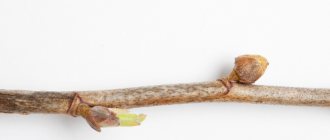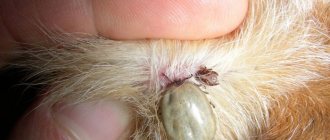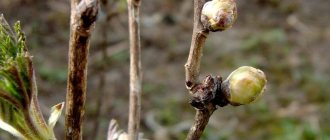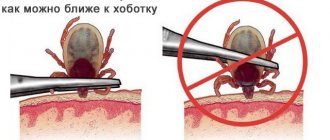- Description of the insect and its life cycle Varroa mite - description of females and males
- Life cycle of an insect
- Pericin for varroa mites
- Drone brood cutting
- Pine flour
The varroa mite is a small insect, no more than 2 mm in size, that is the causative agent of a serious disease in bee colonies and a carrier of various infections. Previously, because of this pest, beekeepers had to burn apiaries, but in recent decades, effective means of combating it have appeared. Let's look at how the parasite develops and how to counteract it.
Description of the insect and its life cycle
The varroa mite is an ectoparasite that lives on bees. The insect has a flat body with legs covered with hair and 4 pairs of legs, thanks to which it moves and clings to the bee.
Varroa mite - description of females and males
Females are colored dark brown, their size is 2 mm. The mouthparts are hidden under the body and have a piercing-sucking appearance. The females use it to pierce the bee’s shell and feed on its blood.
Female varroa mites have the following morphological structure:
- they have a movable peritremal tube, thanks to which breathing is regulated in different living conditions;
- the specific shape of the body allows it to be firmly held on the bee’s body;
- with small teeth on the chelicerae, the females are firmly kept from falling out of the bee's wound;
- the springy cover prevents the females from sticking to the sticky substance.
Male varroa mites are smaller and have a round body shape. Their bodies are painted in white and gray tones with an inconspicuous yellow tint. The oral apparatus of males is designed to pump semen during fertilization of females. The ends of their legs are crowned with suction cups.
Life cycle of an insect
The entire life cycle of these arachnid representatives consists of the following stages:
- The females move from the bee to the honeycomb and climb into the cell with the bee larva until it is sealed. 3 days after the cell is sealed, the female begins laying eggs. Usually there are 5 eggs in a clutch, half a millimeter long.
- The eggs hatch into larvae, which soon turn into nymphs. Nymphs are equipped with 4 pairs of legs. The nymphs molt and enter the next stage, the deutonymph. They feed on the hemolymph of bees.
- Males, staying in cells, fertilize young females, then their mission is considered completed, and they die of hunger. In this regard, only females parasitize bees.
- Young bees, having completed their development, are selected from the cells. At the same time, the cells are left by mites. They climb onto bees or drones, where they remain until the next oviposition.
The entire life cycle, which starts from the moment the egg is laid and ends with the appearance of an adult (imago), lasts from 8 to 11 days for females, and 9 days for males. In summer, the life expectancy of females is no more than 120 days, and in winter – almost 150 days.
In winter, there is no bee brood, so mites do not reproduce, and every tenth of them dies. However, with the onset of spring, their number begins to increase sharply and can increase 20 times.
At +24 degrees, female varroa can live without food for almost a week. When the temperature drops, the varroa mite stops breathing and hides in the cells of the honeycomb. It becomes difficult to destroy it.
Typically, 4-5 parasites are attached to a worker bee, 8 female mites are parasitizing on drones, and up to 20 can be counted on bee and drone pupae.
Ways to combat ticks in the summer
During the hot season, bees are treated for varroatosis mainly using zootechnical methods to avoid the drug getting into the honey. Among them, the following are especially effective:
- destruction of drone brood;
- creation of layering.
Destruction of drone brood
In summer, up to 90% of parasites are found in drone cells, since they are more spacious. Therefore, beekeepers place a frame with a wax strip near the bee brood. The bees begin to build it up with drone cells, and the queen lays eggs in them.
After sealing the cells, the frame is removed from the hive and placed in hot water for 3 hours, which will ensure the death of the mites. Then the caps are unsealed and the frame is returned to its original place. In this case, the larvae will serve as protein food for the inhabitants of the hive.
Along with the previous one, there is also another method. It consists of unsealing the cells, the contents of which must be thoroughly shaken out and then destroyed. The frame can be replaced only after washing with a 2% acetic acid solution.
Creation of layers
This method is as follows: a sterile period is created on the queen cell or barren uterus, by the end of which all parasites must leave the cells and move on to adult individuals. Next, the female will begin to worm, after which it is necessary to immediately use drugs that destroy ticks.
You can also create broodless layering. This method is carried out by installing honeycombs with beebread, honey and dry food in the hive. Then, insects from the infected colony (all except the queen) need to be shaken out onto the gangway, and a frame with open brood should be placed in the hive (as a rule, a queen cell or fertile female is planted). The cuttings must be removed from the apiary and treated against varroa.
If the hive is multi-body, a second body should be used to create a layer. It is necessary to transfer all the brood (except for one of the youngest), as well as a mature queen cell or fertile uterus.
In this situation, the upper body is placed above the lower one and rotated 180 degrees. Thus, the flying bees will gather in the lower housing. As a result, when the brood comes out, the bees must be treated against mites in both buildings.
Next, the hive with the bee family (later the queen is hatched in it) needs to be moved to the side, and in its place another one must be placed, in which drying and honey frames are first installed, and the queen is also placed. Parasites should only appear on flying insects gathered in the hive, which must be treated with special preparations. After flying around the female, the same procedure should be carried out with each of the bee colonies.
Herbal preparations
In addition to zootechnical methods, in the summer you can use preparations made on the basis of plant extracts (the absence of chemical components in their composition minimizes the possibility of side effects):
- Evaporator. It is placed on a frame and filled with alcohol (but not industrial alcohol) for 3 weeks, adding a small amount of lavender essential oil. Periodically, the container needs to be refilled. You can use either a factory-made evaporator or a home-made one (it is a jar covered with a lid with holes).
- Freshly picked thyme. The plant is crushed and placed in gauze and placed on a frame. Next, it is covered with cellophane until it dries. After this, the thyme grass is replaced with a new one. This method is used throughout the summer, but its effectiveness is very low.
How does infection occur?
Infection of bees with the varroa mite leads to a severe invasive disease of bees, their pupae and larvae, called varroatosis. This disease is a real scourge of the beekeeping industry and causes enormous damage to it.
In summer, the spread of mites from infected bees to healthy ones occurs in the following way:
- wandering bees;
- thieving bees;
- when removing apiaries;
- during swarming of bees;
- when purchasing bees and queens;
- when introducing infected brood into families;
- when infected bees come into contact with healthy ones, during pollination of flowers;
- due to improper storage of drone brood.
Varroa can spread at a speed of 10 km per quarter, and this depends on the presence of apiaries in the vicinity. It has been noted that in regions with a hot climate, varroatosis spreads faster.
Symptoms of infection
After a bee colony is infected with varroa, the disease occurs without visible signs for the first 2 years. In the third year, the number of mites increases sharply and they infect a third of the bees in the hive.
Affected bees and drones have characteristic deficiencies:
- they have no or incompletely developed wings and legs;
- the bees' body is deformed;
- the brood is variegated;
- by autumn the number of bees sharply decreases;
- During the wintering process, bees do not behave calmly;
- the bottom of the hive is covered with dead bees, on which parasites are visible;
- heavily infected colonies may leave the hive after migrating.
Signs of illness
Unfortunately, it is often not possible to detect varroa mites for a long time, since signs of the disease begin to appear only after 1-2 years.
Characteristic symptoms of the disease:
- the appearance of “ugly” insects: with a deformed body, without legs or wings;
- restless behavior of bees (this may be caused by the desire to throw off parasites);
- detection near the hive of a large number of crawling individuals incapable of long-term flight;
- decrease in the weight of bees, presumably caused by protein starvation;
- variegated brood;
- death of a large number of larvae (bees throw them onto the landing board).
With extensive reproduction, mites can partially infect open brood (decomposing larvae can be seen).
Application of purchased acaricides
When using chemicals against ticks, you must adhere to the following recommendations:
Their use is strictly prohibited on the eve of honey collection or during the process. Neglecting this rule can result in dangerous toxins in the honey.
It is necessary to use only those drugs that are approved for treatments against varroa mites. Formic acid may only be used in the form of Illert tiles. Before using a chemical, you must carefully read the instructions.
The honeycombs that are in the hive at the time of processing cannot be used later, like honeycombs. They definitely need to be melted.
In the process of pumping out honey, you need to use a sieve to separate wax particles from the honey. The wax may contain pesticide residues.
Chemical-based products are used against ticks that kill them or severely damage them. Drugs can be fed to bees and affect the parasite through the blood.
In addition, they can evaporate in the hive and infect the pest through the respiratory system. Also, some drugs act through the contact of bees with them through the strips along which they move.
The following drugs are currently used:
Pericin for varroa mites
This chemical acts on the parasite through the bee's blood. It kills ticks that are on it. It is used in winter, when there is no brood. Usually 2 treatments are planned at intervals of a week, at temperatures close to zero.
A colony in a two-hull hive uses 30 ml of emulsion. Treatment is carried out with a spray bottle or syringe.
Apitol
This water-soluble drug easily penetrates honey, which requires careful use. The product powder should be dissolved in water and applied by spraying.
Formic acid on Illert tiles
The method is based on the evaporation of the product from the surface of the tile. Vapors of the drug penetrate into the hive with the air and affect mites through the respiratory system. Apply the chemical in the evening, with the taphole open, at a temperature of 12 to 20 degrees Celsius.
Such treatments can be planned 4 per season, with intervals between them of 15 days. For a single-hull hive, 1 tile is enough.
Cecafix against varroa mite
This drug is in many ways similar to pericin, but it is better tolerated by bees.
Bayvarol
The product is sold in the form of special strips, which should be hung along the inner perimeter of the hive. The product gets on the bees when they come into contact with the strips.
Biotechnical measures against varroa mite
The essence of this negative impact on ticks lies in human intervention in the course of their biological development. The list of such events includes:
Drone brood cutting
Female mites often lay eggs in honeycomb cells containing drone brood. If you cut it out and then destroy it, you can reduce the number of parasites. This work should be planned for the junction of March and April.
Destruction of a honeycomb trap with a queen locked in it
According to this method, the queen is placed 3 times in turn for 10 days on an empty honeycomb in a frame. The queen begins to worm and soon does not remain outside the cage with the open brood queen.
Female mites crawl onto the open brood of honeycomb traps to reproduce. All that remains is to freeze it in order to destroy the individual.
Heat treatment
The trap honeycombs or all the honeycombs with brood are heated to a temperature level at which the mites die, but the bees still survive. This method is considered quite effective, but very labor-intensive.
What am I doing
I use small/natural honeycomb cells and mesh trays in the hives and monitor for mites using a white sheet in the tray. As long as the mites are under control, and from 2002 to this day they have been, that's all I do. If suddenly the number of mites increases while the stores are installed, I will probably fumigate the hive with edible mineral oil or spray powdered sugar. If after collecting the honey the number of mites does not decrease, I will treat the hive with oxalic acid vapor. However, I haven't needed any of this since my bees have regressed to their natural cell size. Therefore, the use of small cells is quite effective for me against both types of mites and is suitable for normal conditions.
Folk remedies for varroa mites
Along with chemicals, folk remedies are successfully used in the fight against varroa mites. The most popular herbal preparation is Varrabraulin. This environmentally friendly and safe product is used at the rate of 4 g per frame.
In addition, the following recipes are widely used:
Pine flour
The recipe is prepared and used as follows:
- take any needles;
- dry the material;
- grind the needles into powder;
- sprinkle the beehives with powder three times, at intervals of a week, at the rate of 50 g per family;
- After contact with the powder, the varroa mite will no longer be able to attach itself to the victim.
Dill oil for varroa mites
The recipe is prepared according to the following algorithm:
- take 2 cups of crushed dill seeds;
- mix the powder with 100 g of sunflower oil;
- the composition is heated in a water bath for 2 hours;
- leave the composition for 22 hours;
- squeeze out the composition and spread it on a piece of plastic film measuring 30 by 20 cm;
- the film with the smeared side is placed on the frame, and on top of it is placed the same piece of film with the smeared side facing up;
- after a week this procedure should be repeated.
Horseradish
Dried horseradish roots are placed in a smoker along with other flammable material. Then the hives affected by the mite are thoroughly treated with smoke.
Diagnostics
Parasites are quite easy to detect by careful inspection of bees and their cells. To determine the degree of infection of a family of individuals with mites, you need to take bees from all brood frames. Thus, about 200-250 individuals will be needed. Insects should be placed in a liter jar and filled with boiling water, after adding washing powder.
Then, the container must be shaken for 2-3 minutes. After carrying out all the above manipulations, mites will appear in the solution, which must be carefully counted. The resulting number is multiplied by 100, then divided by the number of bees.
The result will show the infection:
- up to 2% - weak;
- 2-4% - average;
- more than 4% - strong, indicating an epidemic.
Treatment methods are selected according to the percentage of infection. At the same time, the fight against varroa is significantly complicated by the fact that medications do not have an effect on individuals in closed cells.
Preventative measures for the appearance of varroa mites
To protect your bees from varroa, you need to plan and implement a range of preventive measures. Here is a list of the most important of them:
- if you have purchased a bee family or caught a swarm of bees, treat them with pericin;
- regularly inspect the hive tray and drone brood, trying to detect the parasite at the earliest stage of infection;
- It is advisable to carry out anti-mite treatments simultaneously with beekeepers who have their hives nearby;
- Clean and disinfect hives regularly.
The varroa mite is one of the most insidious parasites that can significantly reduce honey production in an apiary. Nowadays, the beekeeper has many methods and options for its destruction.
You just need to develop your own strategy to combat the parasite, which would be combined with the design of the hives, climatic conditions, food supply and technology for keeping bees.
Prevention measures
To reduce the harm caused by the varroa mite, various preventive measures should be taken:
- Acquired families and captured swarms must be treated at least once (for example, the swarm with pericin, and the rest with formic acid). Based on the number of parasites on the pallet, a decision is made about the need for further treatment.
- Regular inspections of the tray and drone brood should be carried out for the presence of parasites.
- It is extremely important to coordinate treatment against varroa with neighboring beekeeping farms to obtain a good result and to avoid re-infestation.
- Apply control methods regularly, and do not miss the periods most suitable for their implementation.
- Periodic cleaning and disinfection is required. Following normal hygiene rules will help protect you from mixed diseases.
- It is necessary to reheat the honeycombs in a timely manner.
The characteristics of the varroa mite, analysis of mites on larvae and adult bees, treatment methods, medications to combat the pest and the time of their use are described in detail in the video:
Varroa mites are dangerous pests that cause a fatal disease that causes serious complications in the apiary. However, today there are a large number of ways to both combat attacking parasites and prevent their appearance and spread.
0
1
Copy link
